Founded in the 17th century, the city of Ulan-Ude developed slowly. He was constantly under the influence of neighboring regions, but managed to preserve the national Buryat flavor. For the above reason, the sights here are very different: the legacy of communism, like the huge head of Lenin, the echoes of tsarist Russia, for example, the triumphal arch, and the ethnographic museum, which tells about the past of the republic.
Buddhism and nature are the main tourist destinations associated with Ulan-Ude. Datsans aim to attract not only deeply religious followers, but also those who are just interested in religion. Tourist excursions to Baikal depart from the city on a regular basis. The unique lake is a magnet for guests of the republic.
What to see and where to go in Ulan-Ude?
The most interesting and beautiful places for walking. Photos and a short description.
- Datsan Rinpoche Bagsha
- Soviet Square
- Lenin monument
- Revolution square
- Lenin Street
- Triumphal Arch Royal Gates
- Odigitrievsky Cathedral
- Buryat Opera and Ballet Theater
- Russian Drama Theatre. Bestuzhev
- Museum of Nature of Buryatia
- Museum of the History of Buryatia
- Museum of the history of the city of Ulan-Ude
- Art Museum. Sampilova
- Monument Mother Buryatia
- Monument to Geser
- Victory Memorial
- Ethnographic Museum of the Peoples of Transbaikalia
- Ivolginsky datsan
- Ethnocomplex Steppe nomad
- Lake Baikal
Datsan "Rinpoche Bagsha"
It is located at the highest point of the city - on Bald Mountain. This Buddhist center is designed to educate not only the followers of the religion, but also those who feel close to Buddhism. The datsan was opened in 2000. 4 years later, the largest gilded Buddha statue in Russia was installed here, and after another 5 years - the largest bell. One of the relics is a special rosary, the weight of which is 350 kg.

Soviet Square
The central square of the city, which in the past was called Nagornaya. The development of the territory began in the 18th century. From here the road stretched to the Odigitrievsky Cathedral - the first building in Ulan-Ude, built of stone. Later, two paths appeared. Near the square there are many significant objects. Among them are the Opera and Ballet Theatre, a monument to Lenin and the Royal Gates arch, rebuilt in 2006.
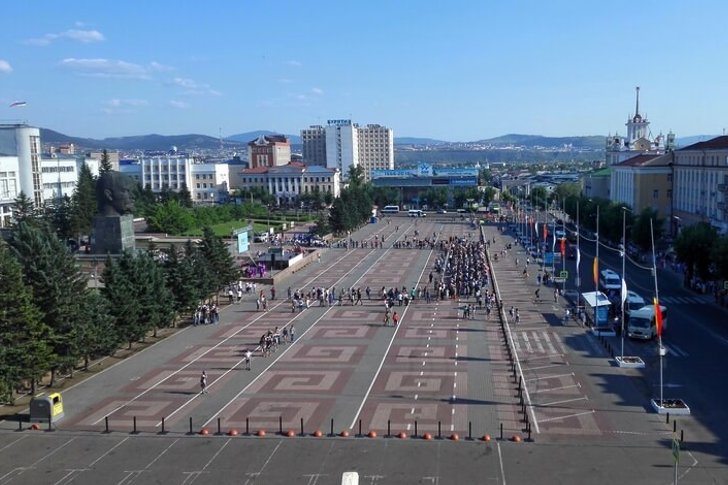
Lenin monument
This is the largest head of the leader of the proletariat in the world. The installation was timed to coincide with the centenary of the birth of Lenin - by 1971. The sculptors father and son Neroda were commissioned to create a monument to replace the three monuments that already existed in the city. They chose not quite a typical approach and presented their project at international exhibitions. The height of the head together with the pedestal is 14 meters, the weight is more than 42 tons.
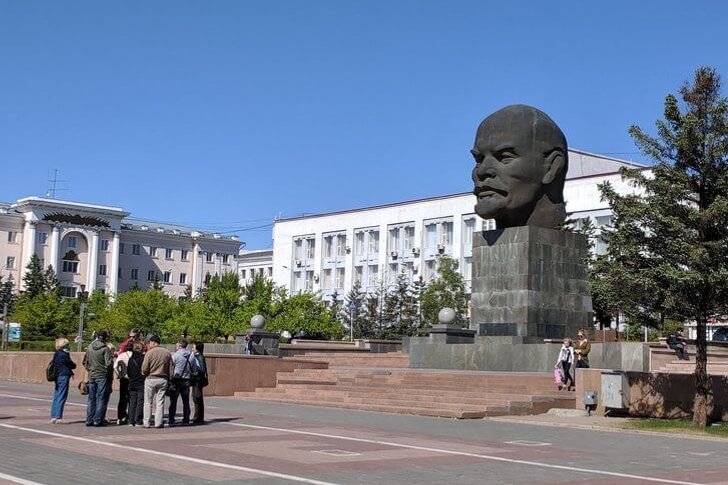
Revolution square
The first town square, whose history begins in the 18th century. It was the site of large fairs. For some time there were even permanent trading rows here. The new name came after the revolution: rallies and people's gatherings were held on the square. The name was officially fixed in 1924. The main attraction is the monument to the fighters for communism, which previously stood on Soviet Square.

Lenin Street
During its existence, it has changed several names. It was called Traktovaya because of the Siberian tract and Nikolaevskaya after the arrival of the Tsarevich in the city. Although trees were planted here after Lenin's death, the pedestrian zone was opened only in 2004. It stretches from Sovetskaya to Kirov Street. On the "Ulan-Ude Arbat" there are sculptural compositions, architectural monuments and even a triumphal arch.
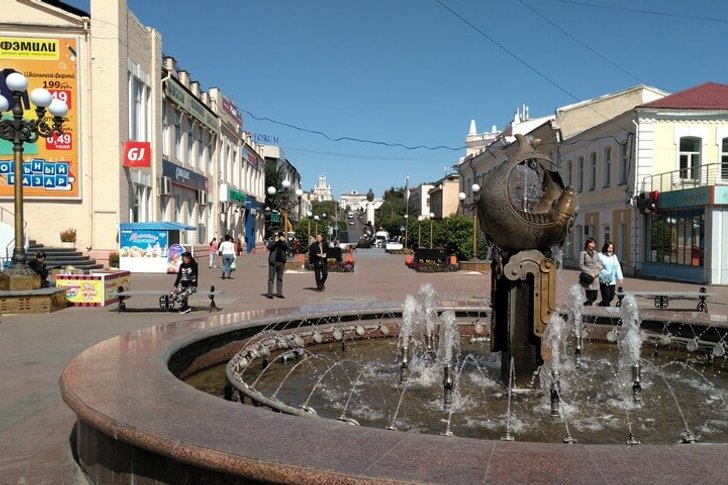
Triumphal Arch "Royal Gates"
Erected in honor of the visit of the city by Tsarevich Nicholas in 1891. The arch was decorated with decorative elements. Double-headed eagles were the first to suffer after the revolution. The rest of the structure stood until 1936, but in the end it was also destroyed. By 2006, the arch was restored according to the old project, but increased in size. Now the height is 9 meters, and the width is about 14 meters.

Odigitrievsky Cathedral
Location - the coast of Uda. Construction was carried out on donations from merchants. It stretched for 44 years. The cathedral was consecrated in 1785. All three parts of the composition: the temple, the bell tower and the refectory are connected, so they look like a monolith. In the late 1920s, the cathedral was closed. The buildings survived, as there was a museum inside. Beginning in 1992, the temple was gradually handed over to the Russian Orthodox Church. Now the cathedral is a cathedral.
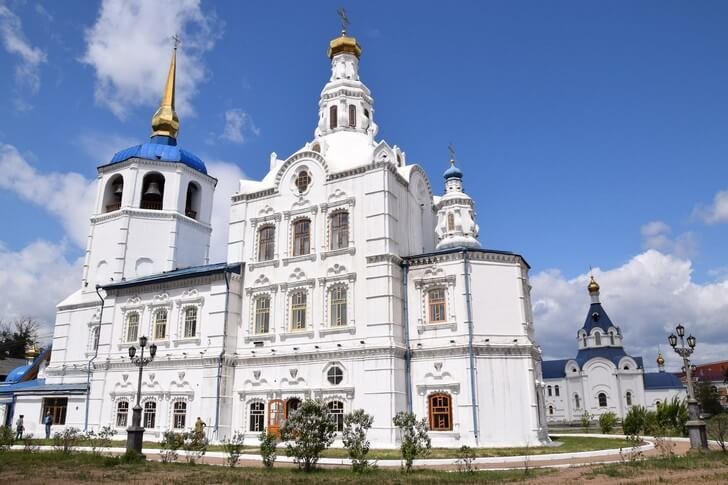
Buryat Opera and Ballet Theater
Founded in 1939. The theater began to develop from the local music school. He quickly gained momentum and began to gather full halls. But there were problems with the construction of the building, since the war began. It was handed over only in the early 50s. The architectural style - the Stalinist Empire style - is quite typical for that time. The period of reconstruction fell on the zero. In addition to the facade and the stage, it is planned to update the rehearsal rooms.

Russian Drama Theatre. Bestuzhev
The first professional theater of the republic has existed since 1928. Then guest performers from Moscow came to the city and accepted the offer to stay in Ulan-Ude. There were repeated changes in the troupe team and relocations. Since 1991, the theater has been named after the Decembrist Bestuzhev, and since 2009 it has occupied a specially constructed building. In front of the facade is a cascade of fountains. There is a theater club and a museum inside.

Museum of Nature of Buryatia
The only one of its kind in the Far East and Siberia. It opened in 1983, although the collection began to form a few years earlier. The exhibits are exhibited in 5 halls. The museum is engaged in environmental education. Much attention is paid to the interaction of man with nature. The diversity of the Buryat flora and fauna is also described. In the center of the exposition is Lake Baikal and its features.

Museum of the History of Buryatia
One of the oldest museums in Siberia. The moment of creation is considered to be 1919, although it was opened to visitors only a few years later. The first exhibit is a clock made by the Decembrist Bestuzhev during hard labor. Since the funds reached the mark of 100 thousand items, the museum was allocated a spacious building - a former merchant's shop. Among the exhibits are religious objects, numismatics, old books and items of clothing.

Museum of the history of the city of Ulan-Ude
Founded in 1999. The exposition is dedicated to significant events from the past and present of the Buryat capital. Since 2001, the collection has been exhibited in the former home of the merchant Goldobin, an honorary resident of the city. The mansion is known for the fact that the Tsarevich, the future Tsar Nicholas II, stayed here. In total there are 6 exhibitions working on a permanent basis. The museum also accepts guest collections.
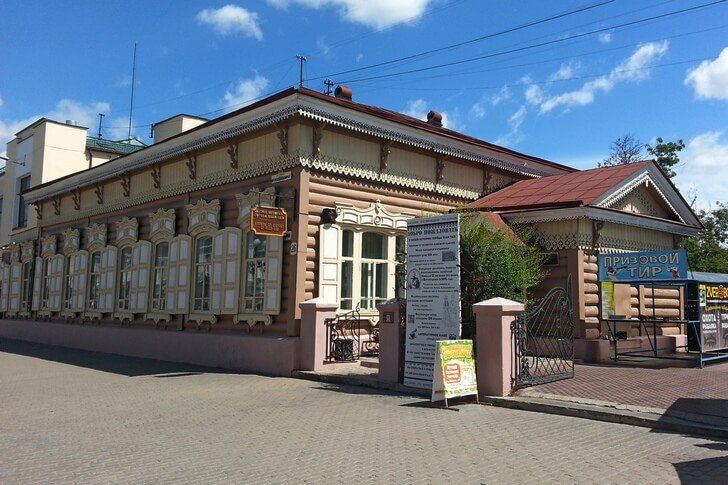
Art Museum. Sampilova
In 1946, when the museum first opened, its few funds consisted mainly of works by local artists. A year after the first exhibition, the collection was replenished with works of art from the Russian Museum. Now the exposition includes not only paintings and drawings, but also national arts and crafts and jewelry from different eras and techniques.
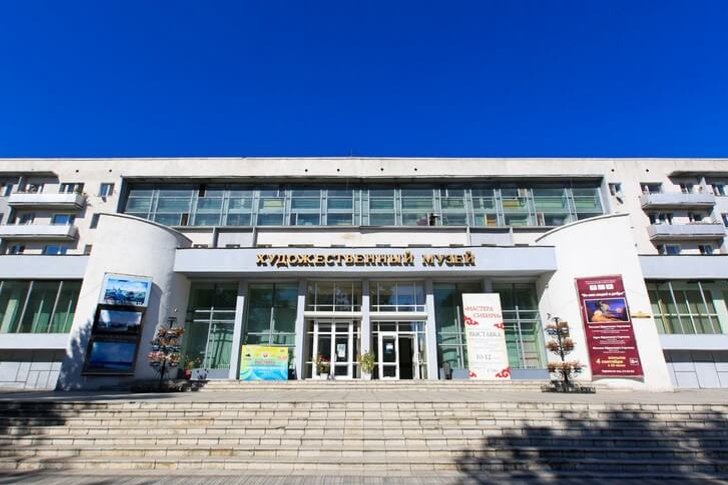
Monument "Mother Buryatia"
It has several more names, including - "Buryat Statue of Liberty" and "Hospitable Buryatia". The highest monument of the city was erected in 2002 in the central part of Ulan-Ude. In 2008, it was moved to the Selenginsky Bridge, as there were few attractions in this area. The sculptor Mironov depicted Buryatia as a woman with a national hadak in her hands. The height with the pedestal is about 16 meters.
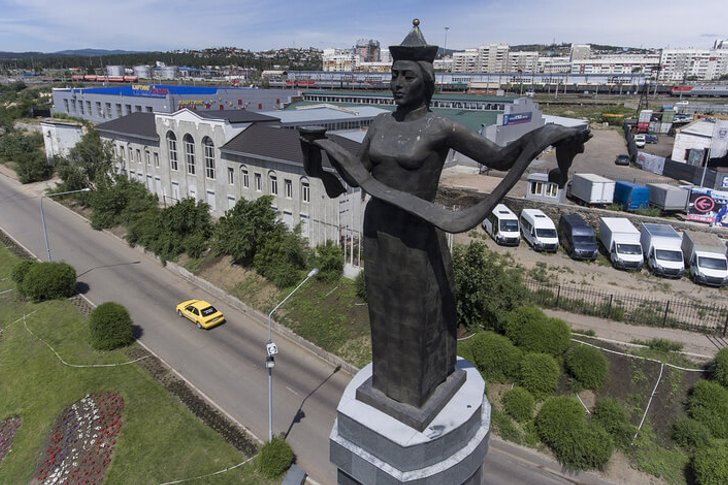
Monument to Geser
Inaugurated in 2006. Dedicated to a brave warrior - the hero of local myths. Geser is found in the legends not only of the Buryats, but also of the Mongols. He is depicted sitting on a horse, as if even now he is guarding the city's tranquility. The height of the sculpture itself, including the spear, is about 9 meters. Victory Park was chosen as the installation site. From here the monument is clearly visible, any sightseeing tour is not complete without a visit to Geser.
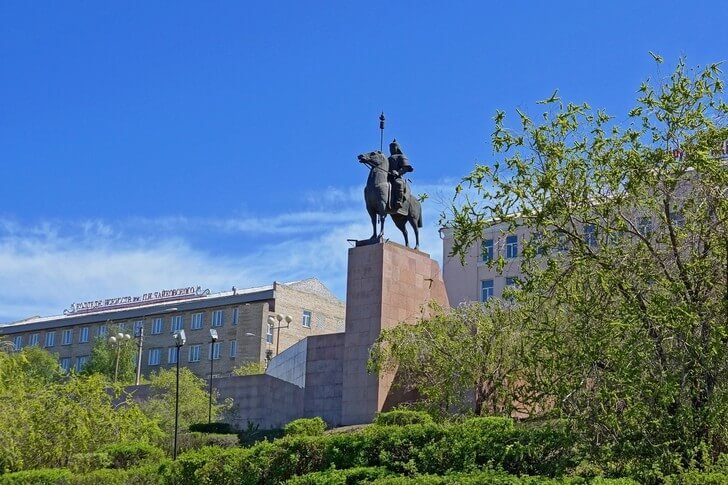
Victory Memorial
It is a complex of several objects. The central role is assigned to the T-34 tank, installed here in 1967. A decorative sculptural composition appeared nearby in 2000. A few years later, the monument was supplemented with the "Eternal Flame" and a wall with portraits of heroes of the USSR who were born in Buryatia. There are plaques on the monument indicating important dates and explaining what it is dedicated to.

Ethnographic Museum of the Peoples of Transbaikalia
Opened in the suburbs of Ulan-Ude in 1973. One of the largest open-air museums in Russia: it covers an area of 37 hectares. The territory is divided into 7 ethnographic complexes. About 11 thousand exhibits and about 40 architectural monuments are exhibited here. The museum also has an expanded version of the living corner. Pets are typical representatives of the local fauna.

Ivolginsky datsan
It is located in the Upper Ivolga, which is 30 km from the capital of the republic. Construction was completed in 1945. This complex is called "Khambyn Sume". It is the center of Russian Buddhism and the residence of the head of Buddhism in the country. There are several temples, university buildings, a hotel for tourists and a museum on the territory. The interior decoration is striking in splendor: the walls are decorated with original art objects and precious stones.
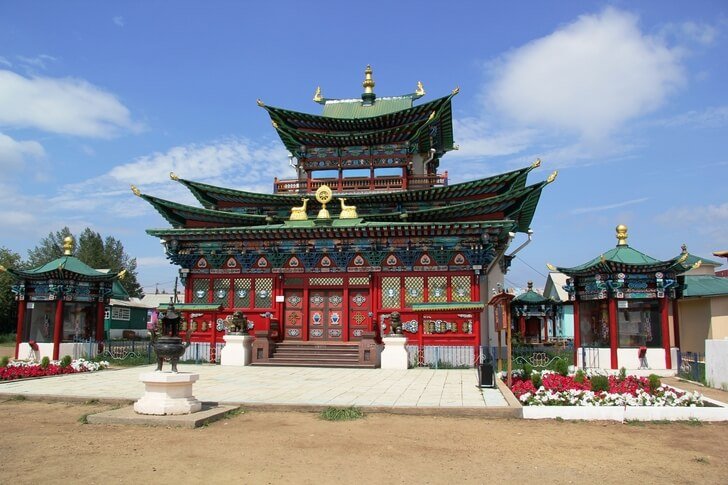
Ethnocomplex "Steppe nomad"
Spread at the foot of Mount Tamhita, which is considered sacred. Guests are offered a wide cultural program. You can get acquainted with the customs of the Buryats not only in theory, but also in practice. For example, try local cuisine, stay in felt yurts, play traditional folk games or ride horses. From here, excursions to the nearby datsan depart.
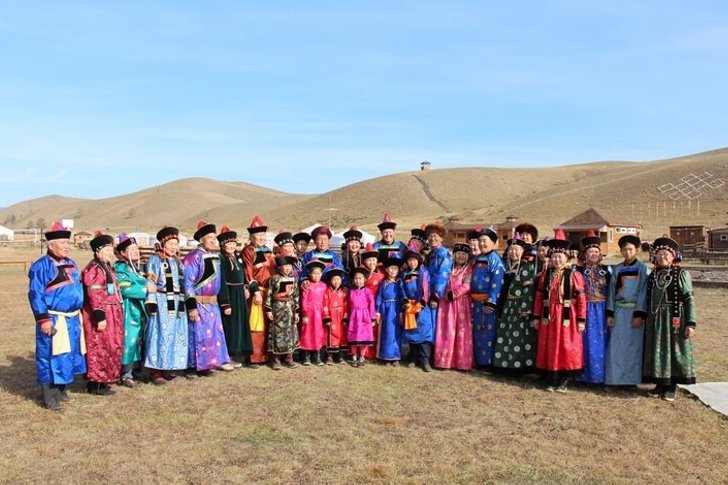
Lake Baikal
The deepest lake in the world. Although it is almost 140 km from the nearest shore of Lake Baikal to Ulan-Ude, tourists prefer to spend time on the road, but to see this natural miracle. The area is 31.7 thousand km², the depth is up to 1642 meters. Unique plants and animals are found on the coast and islands. The area is rich in natural and historical monuments, including the Frolikha tract, Chersky Peak, and the lighthouse of the Baikal Harbor.
